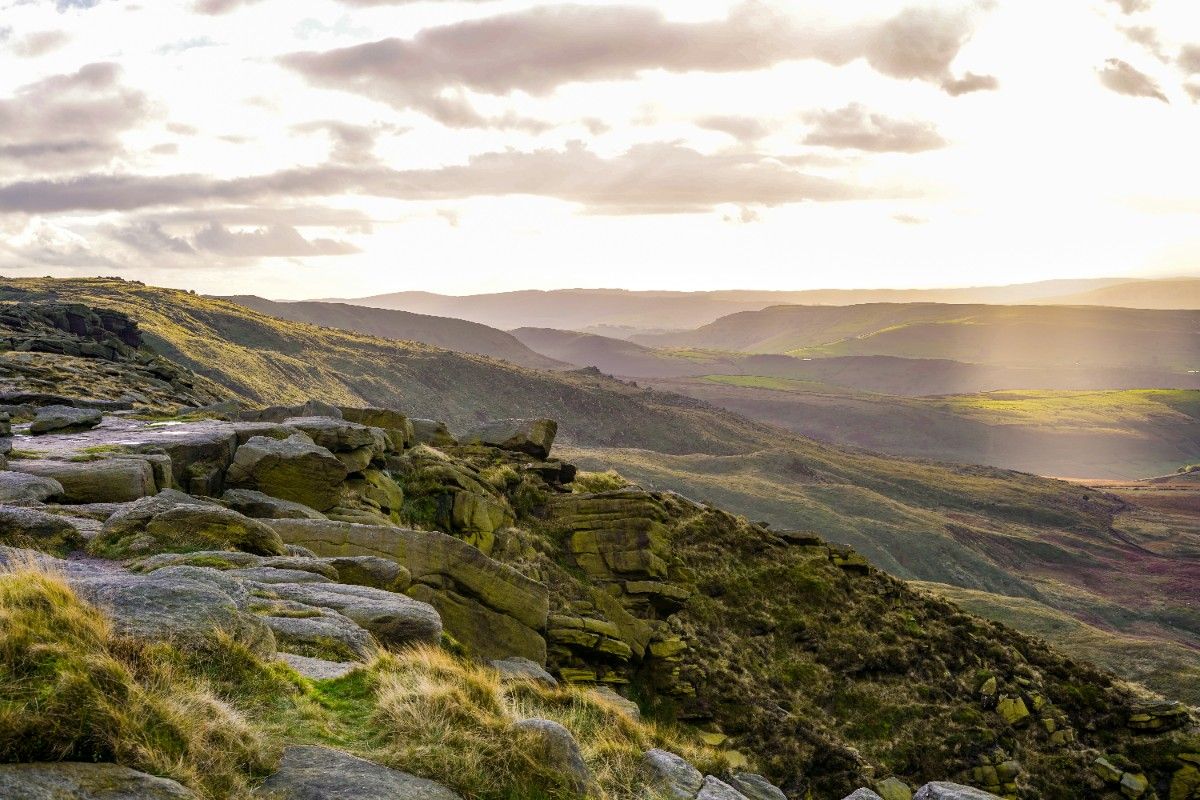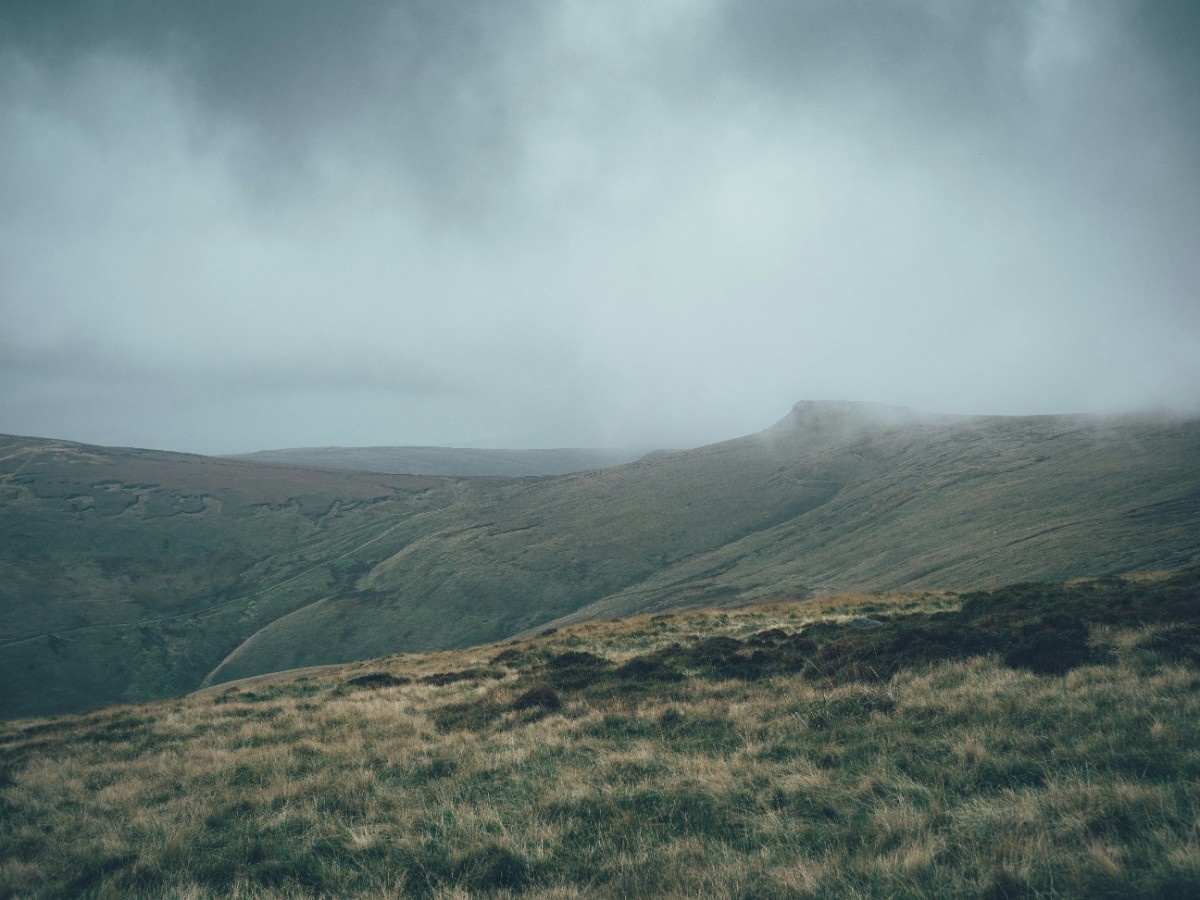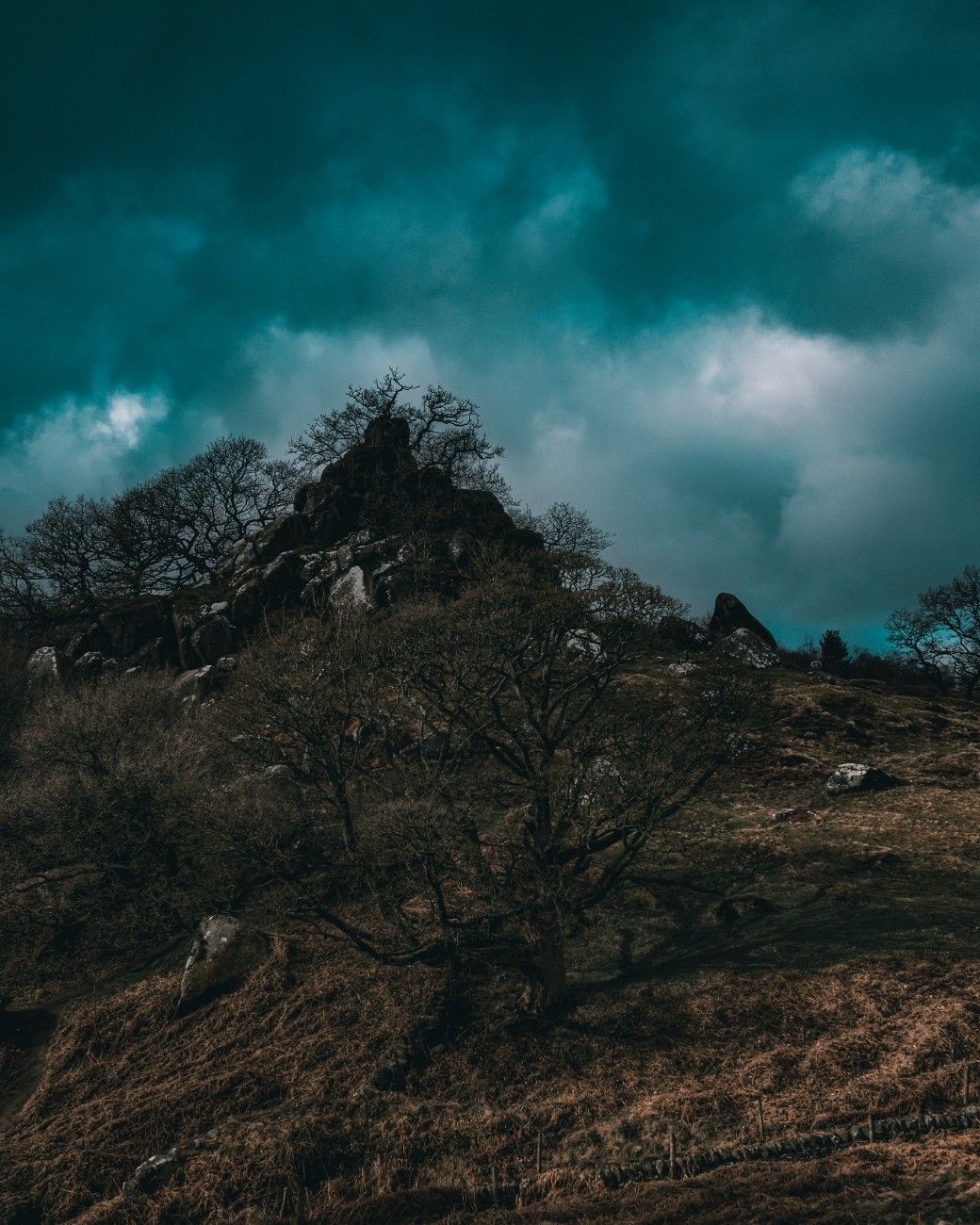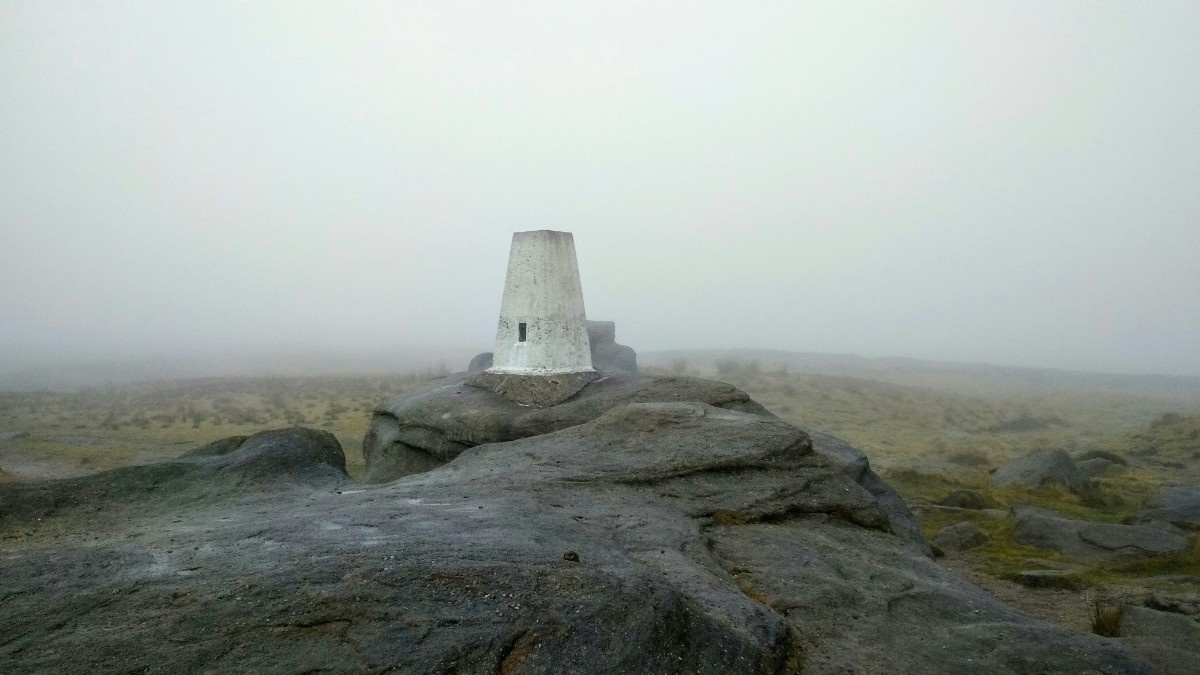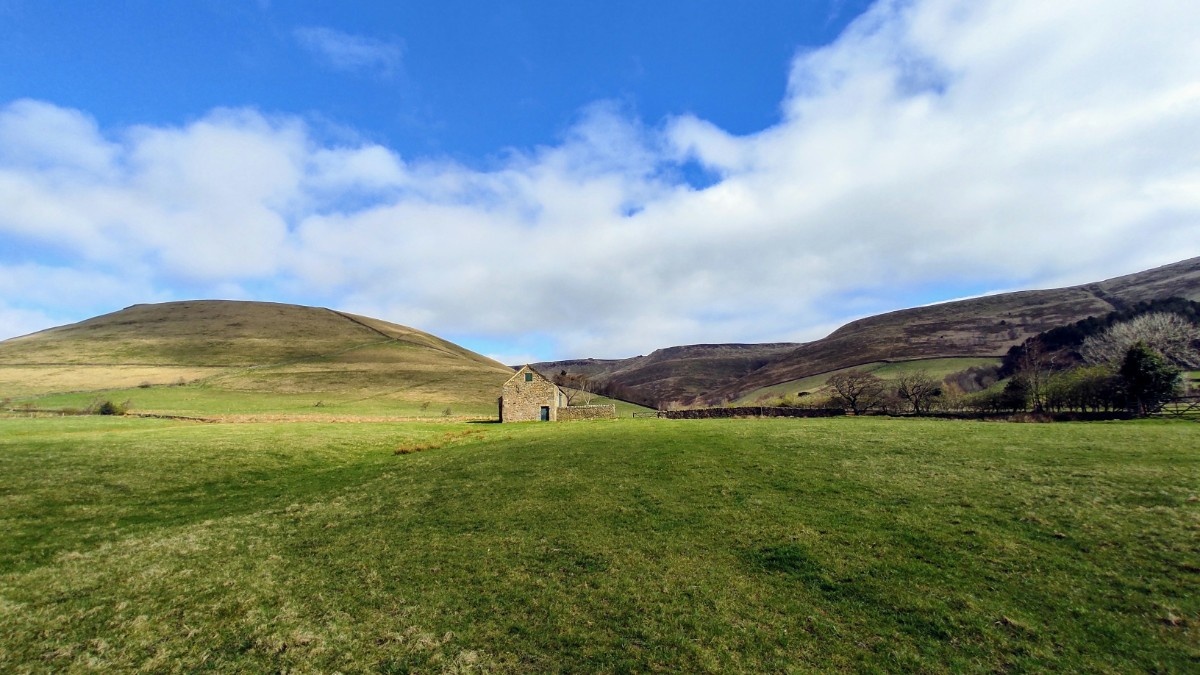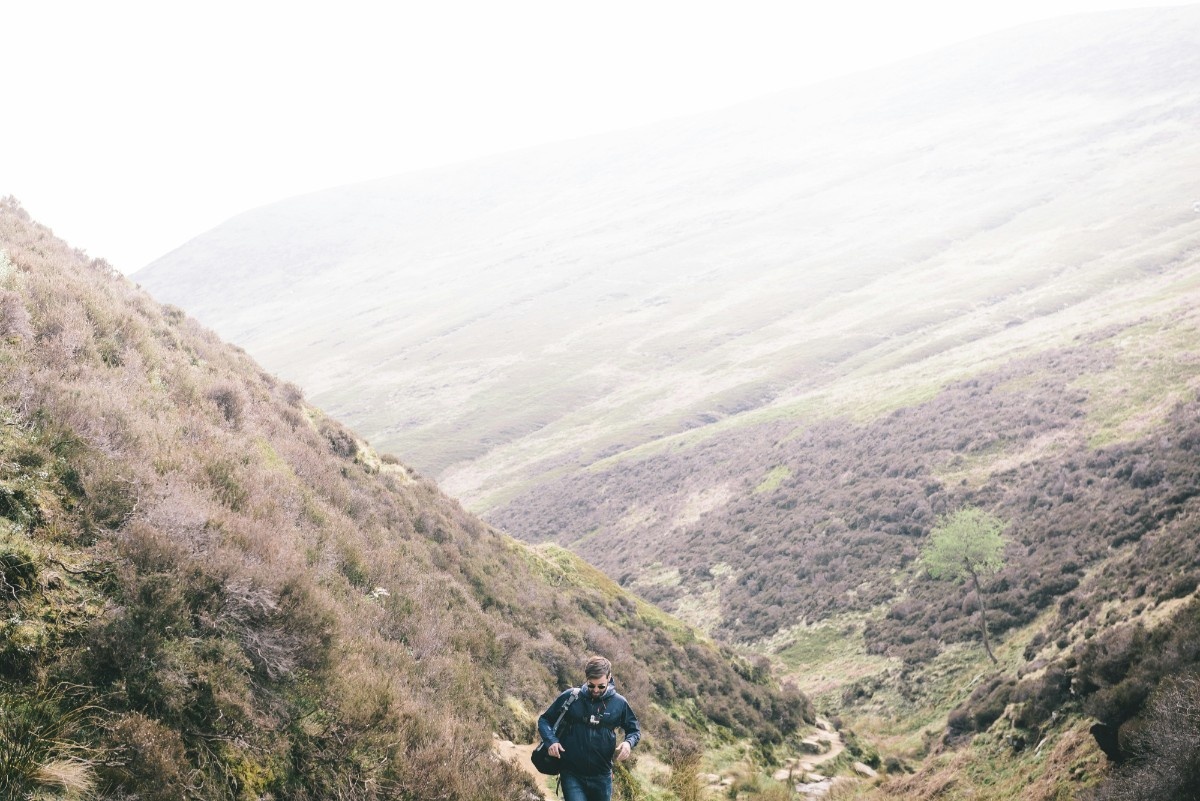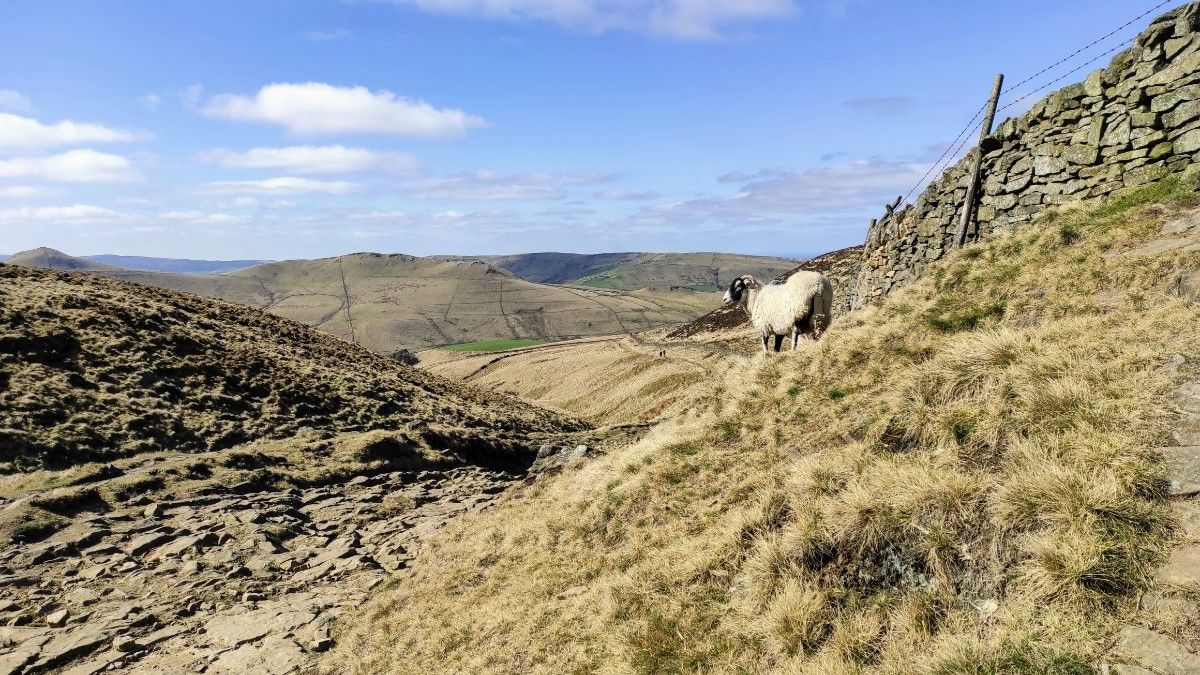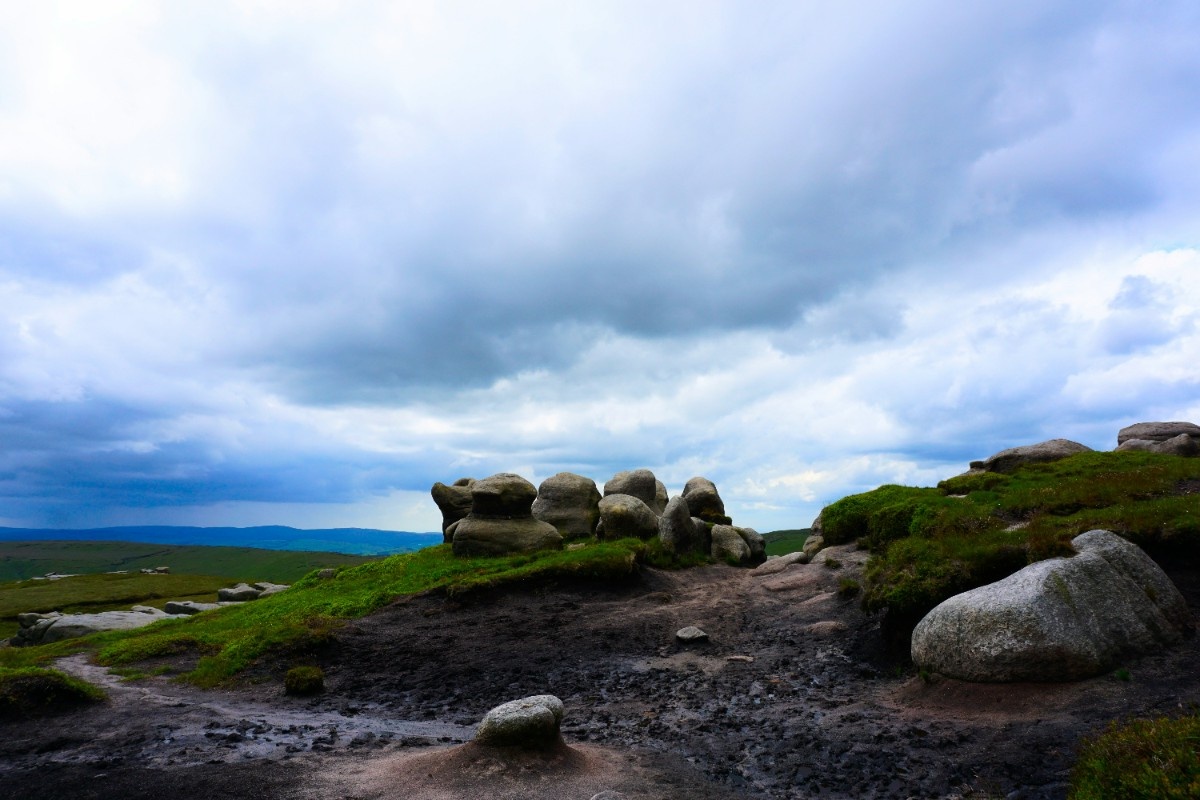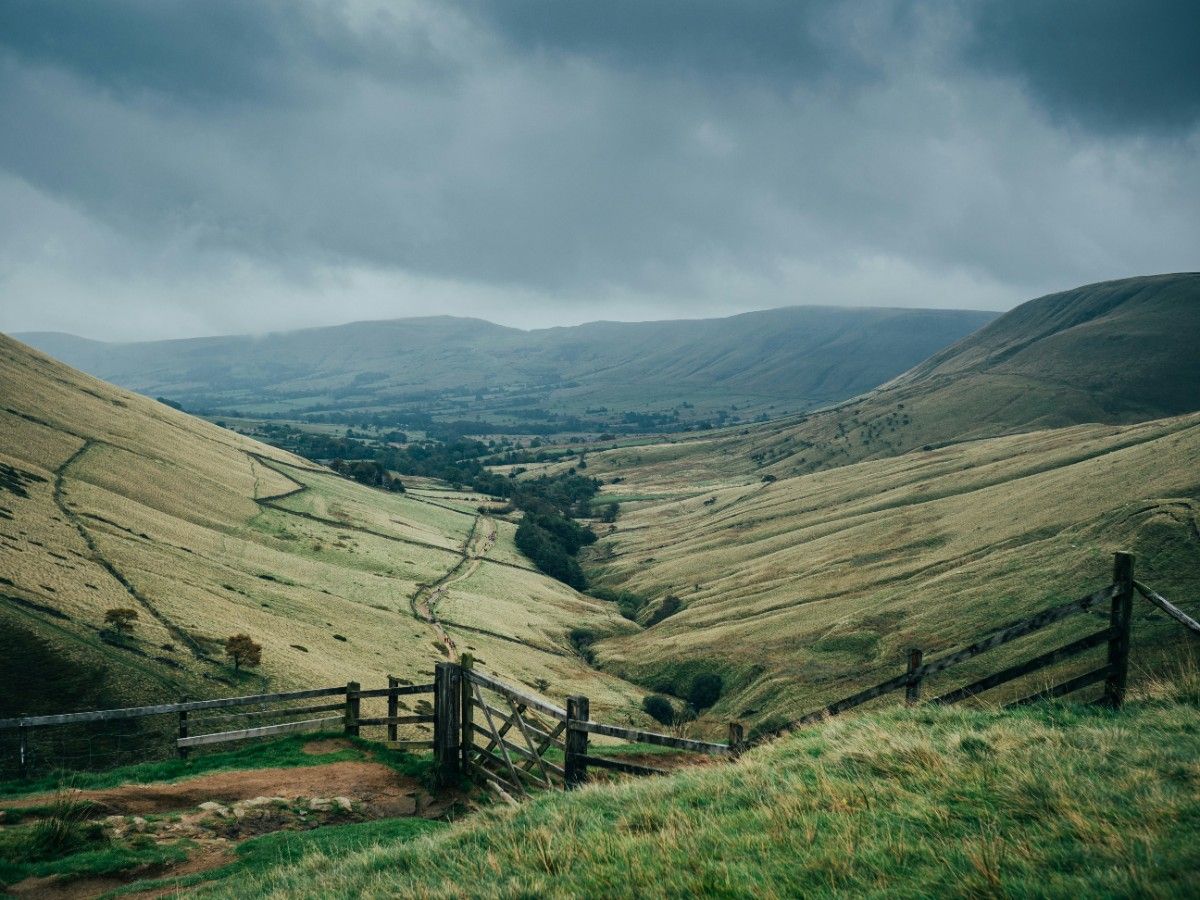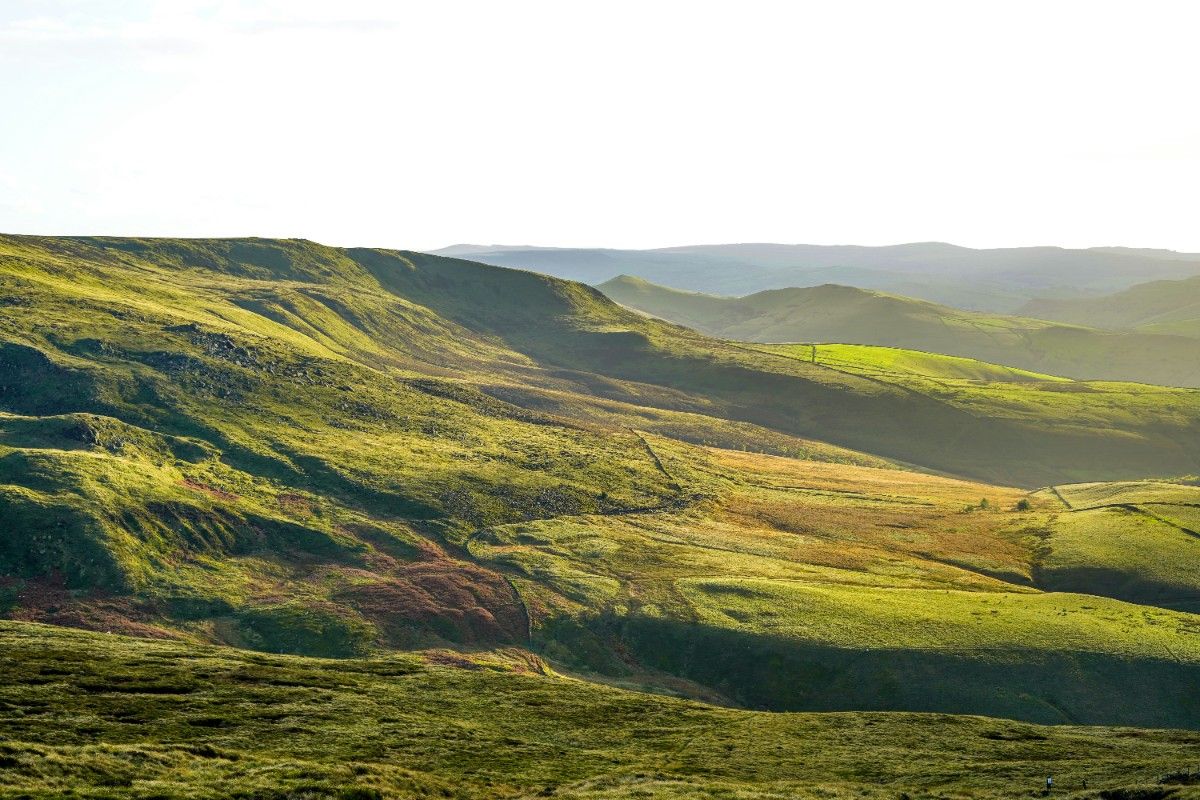Introduction to Kinder Scout
Overview of Kinder Scout
Kinder Scout, situated in the Peak District of Derbyshire, England, is a captivating and iconic destination for outdoor enthusiasts and nature lovers alike. As the highest point in the Peak District, standing at 636 metres (2,087 feet) above sea level, Kinder Scout offers breathtaking views, diverse landscapes, and a rich history that makes it a must-visit for any hiking enthusiast. This dark gritstone plateau, surrounded by steep slopes and cloughs, stretches for approximately 13 square kilometres (5 square miles), providing a vast and challenging terrain for walkers and adventurers.
Location and Accessibility
Kinder Scout is located in the Dark Peak area of the Peak District National Park, which is easily accessible from major cities such as Manchester and Sheffield. The nearest villages to Kinder Scout are Edale and Hayfield, both of which serve as popular starting points for various walking routes. Edale, in particular, is known as the gateway to Kinder Scout, with its convenient train station and numerous amenities for hikers, including pubs, cafes, and outdoor gear shops. From Edale, visitors can embark on the famous Edale to Kinder Scout walk, a challenging but rewarding route that takes in some of the most stunning scenery in the Peak District.
Significance of Kinder Scout
Kinder Scout holds a special place in the hearts of many outdoor enthusiasts, not only for its natural beauty but also for its historical significance. The mountain played a pivotal role in the Kinder Scout Mass Trespass of 1932, a landmark event that helped pave the way for the establishment of National Parks and the "right to roam" in England and Wales. Today, Kinder Scout stands as a symbol of the hard-fought battle for public access to the countryside and a reminder of the importance of preserving our natural heritage for future generations.
History of Kinder Scout and the Mass Trespass
Early Access Restrictions
Before the Kinder Scout Mass Trespass of 1932, much of the British countryside, including Kinder Scout, was privately owned and inaccessible to the public. Landowners and gamekeepers fiercely guarded their property, often using force to prevent walkers and ramblers from entering. This led to a growing sense of frustration among the working-class people of nearby industrial cities, such as Manchester and Sheffield, who sought to escape the polluted urban environment and enjoy the fresh air and beauty of the countryside.
The Kinder Scout Mass Trespass
On April 24, 1932, a group of around 400 ramblers, mostly from Manchester, set out to deliberately trespass on the privately-owned land of Kinder Scout. The trespassers, led by Benny Rothman, a young Jewish communist from Manchester, aimed to assert their right to walk freely in the countryside and challenge the unjust laws that denied them access to the land. As the trespassers made their way towards Kinder Scout, they were met by gamekeepers and scuffles broke out. Several trespassers were arrested, and five of them, including Rothman, were subsequently jailed.
Impact and Legacy
The Kinder Scout Mass Trespass was a watershed moment in the fight for public access to the countryside. The event garnered significant national attention and sparked a wider debate about the rights of ordinary people to enjoy the natural beauty of the British landscape. In the years following the trespass, the momentum for change grew, and in 1949, the National Parks and Access to the Countryside Act was passed. This groundbreaking legislation led to the creation of National Parks, including the Peak District, and laid the foundation for the establishment of long-distance footpaths and public rights of way.
Today, the legacy of the Kinder Scout Mass Trespass lives on, and the mountain has become a symbol of the ongoing struggle for the "right to roam." The event is commemorated annually with a re-enactment of the trespass, attracting hundreds of walkers and outdoor enthusiasts who pay tribute to the brave men and women who fought for their right to access the countryside. As visitors explore the rugged beauty of Kinder Scout, they are reminded of the sacrifices made by those early trespassers and the importance of preserving our natural heritage for generations to come.
Geography and Geology of Kinder Scout
Geographical Features
Kinder Scout is characterised by its unique geographical features, which have been shaped by millions of years of geological processes. The most prominent feature of Kinder Scout is its extensive moorland plateau, which covers an area of approximately 13 square kilometres (5 square miles). This plateau is the highest in the Peak District, with its highest point, Kinder Scout summit, reaching 636 metres (2,087 feet) above sea level. The plateau is surrounded by steep slopes and deep cloughs, or valleys, which have been carved out by the action of water and ice over millennia. These cloughs, such as Grindsbrook Clough and Crowden Clough, provide challenging and scenic routes for hikers to access the plateau.
Another notable geographical feature of Kinder Scout is its gritstone edges. These weathered rock formations, such as Kinder Downfall and the Wool Packs, create a dramatic and iconic landscape that attracts visitors from around the world. The gritstone edges are the result of differential erosion, where softer layers of shale have been worn away, leaving behind the harder gritstone cap. The edges provide a habitat for a variety of wildlife, including peregrine falcons, which nest on the rocky ledges.
Geological Composition
The geology of Kinder Scout is dominated by the Millstone Grit, a thick sequence of coarse-grained sandstones and conglomerates that were deposited during the Carboniferous Period, approximately 320 million years ago. The Millstone Grit is underlain by older shales and limestones, which are exposed in the deeper cloughs and valleys around the edges of the plateau.
The Millstone Grit is a hard and durable rock that has resisted erosion over millions of years, giving rise to the characteristic gritstone edges and tors of Kinder Scout. The rock is composed of sand and pebbles that were transported by ancient rivers from the surrounding uplands and deposited in a vast delta system. Over time, these sediments were compressed and cemented together to form the tough, resilient rock that we see today.
The geology of Kinder Scout also has a significant impact on the hydrology of the area. The porous nature of the Millstone Grit allows water to percolate through the rock, creating underground aquifers and springs. These water sources feed the numerous streams and rivers that flow from the plateau, including the River Kinder, which cascades over the famous Kinder Downfall before continuing its journey through the Derbyshire countryside.
Flora and Fauna of Kinder Scout
Moorland Habitat
The harsh conditions on Kinder Scout, characterised by strong winds, high rainfall, and acidic soils, have given rise to a unique moorland habitat that supports a diverse array of flora and fauna. The most distinctive feature of the moorland is the extensive blanket bog, which covers much of the plateau. The bog is formed by the accumulation of peat, a type of soil that is made up of partially decomposed plant material. The peat bogs of Kinder Scout are some of the most extensive and important in the Peak District, providing a habitat for rare plant species such as sphagnum mosses and cotton grasses.
Another key component of the moorland habitat is the heather moorland. Heather is a low-growing shrub that thrives in the acidic, nutrient-poor soils of the plateau. The heather moorland of Kinder Scout is particularly important for wildlife, providing a habitat for red grouse, a species of bird that is synonymous with the British uplands. The heather also supports a variety of invertebrates, including the bilberry bumblebee, which plays a crucial role in pollinating the moorland plants.
Rare and Endangered Species
Kinder Scout is home to a number of rare and endangered species that are adapted to the unique conditions of the moorland habitat. One of the most iconic species is the mountain hare, a native British mammal that is found only in the uplands of Scotland and the Peak District. The mountain hare has a white winter coat that provides camouflage against the snow, and a brown summer coat that helps it blend in with the heather moorland.
Another rare species found on Kinder Scout is the golden plover, a migratory bird that breeds on the moorland during the summer months. The golden plover is a ground-nesting bird that relies on the heather and blanket bog for its breeding habitat. The bird is highly sensitive to disturbance, and conservation efforts are underway to protect its nesting sites from damage by walkers and other visitors to the plateau.
Other notable species found on Kinder Scout include the merlin, a small species of falcon that hunts over the moorland, and the short-eared owl, a migratory bird that breeds on the plateau during the summer months. The moorland also supports a variety of invertebrates, including the rare and elusive white-clawed crayfish, which is found in the streams and rivers that flow from the plateau.
Conservation Efforts
The unique and fragile ecosystem of Kinder Scout is under threat from a variety of factors, including climate change, overgrazing, and damage caused by recreational activities. Conservation efforts are underway to protect and restore the moorland habitat, including measures to reduce erosion, control invasive species, and promote the regeneration of native plant communities.
One of the key conservation initiatives is the Moors for the Future Partnership, a collaborative project that brings together landowners, conservation organisations, and government agencies to restore and protect the moorland habitat of the Peak District. The partnership has undertaken a range of projects on Kinder Scout, including the restoration of eroded peat bogs, the planting of native tree species, and the management of heather moorland to promote biodiversity.
Another important conservation effort is the work of the National Trust, which owns a significant portion of Kinder Scout and is responsible for managing the land for the benefit of wildlife and the public. The National Trust has implemented a range of measures to protect the moorland habitat, including the management of grazing animals, the control of invasive species, and the promotion of responsible access to the plateau.
Walking Routes and Trails
The Pennine Way
The Pennine Way, one of Britain's most famous long-distance hiking trails, passes through Kinder Scout and offers a challenging but rewarding route for experienced walkers. The section of the Pennine Way that traverses Kinder Scout is approximately 15 kilometres (9 miles) long and takes in some of the most iconic features of the plateau, including the Kinder Downfall and the Kinder Scout summit.
Starting from the village of Edale, the route follows the Pennine Way as it climbs steeply up the Nags Head Clough to the plateau. From there, the trail heads north, passing the famous Kinder Downfall, a 30-metre (100-foot) waterfall that cascades over the gritstone edge. The route then continues along the western edge of the plateau, offering stunning views of the surrounding countryside, before reaching the Kinder Scout summit, the highest point in the Peak District.
From the summit, the Pennine Way descends to the north, passing through the dramatic gritstone formations of the Woolpacks and the Crowden Tower, before eventually reaching the A57 Snake Pass road. This section of the Pennine Way is a strenuous and challenging hike that requires good navigation skills and appropriate equipment, but it offers a truly unforgettable experience for those who are up to the challenge.
The Edale Skyline
The Edale Skyline is a classic circular walking route that takes in some of the most spectacular scenery around Kinder Scout. The route is approximately 32 kilometres (20 miles) long and can be completed in a single day by experienced hikers, or split into two shorter days with an overnight stop in one of the many campsites or accommodations in the area.
Starting and finishing in the village of Edale, the route heads west, climbing steeply up to the plateau via the famous Jacob's Ladder path. From there, the trail follows the southern edge of the plateau, passing the dramatic gritstone formations of Crowden Tower and Woolpacks, before reaching the Kinder Scout summit and the Kinder Downfall.
The route then descends to the north, following the Pennine Way for a short distance before branching off to the east, crossing the River Kinder and climbing back up to the plateau via the Fairbrook Naze path. The final section of the route follows the eastern edge of the plateau, offering stunning views of the Hope Valley and Ladybower Reservoir, before descending back to Edale via the Ringing Roger path.
The Edale Skyline is a challenging but rewarding route that showcases the best of the Kinder Scout area. The route requires good fitness levels and navigation skills, as well as appropriate equipment and supplies, but it offers a truly unforgettable experience for those who are up to the challenge.
Safety and Equipment
Weather and Clothing
The weather on Kinder Scout can be unpredictable and changeable, with conditions ranging from hot and sunny to cold, wet, and windy, often within the same day. It is essential to check the weather forecast before setting out and to be prepared for all eventualities.
Appropriate clothing is crucial for a safe and comfortable hike on Kinder Scout. Layers are key, with a base layer of moisture-wicking material, a mid-layer of insulating fleece or wool, and a waterproof and windproof outer layer. Sturdy, waterproof hiking boots with good ankle support are also essential, as the terrain on Kinder Scout can be rough and uneven.
Other essential items of clothing include a hat and gloves, even in summer, as the wind chill on the exposed plateau can be significant. A spare warm layer, such as a down jacket or insulated vest, is also recommended, as well as spare socks and a change of clothes in case of wet weather.
Navigation and Equipment
Navigation skills are essential for hiking on Kinder Scout, as the plateau can be disorienting and challenging to navigate, particularly in poor visibility. A good quality map and compass are essential, as well as the knowledge of how to use them. GPS devices and smartphones can be useful aids, but should not be relied upon exclusively, as battery life can be limited and signal coverage can be patchy in remote areas.
Other essential equipment for a safe and enjoyable hike on Kinder Scout includes a backpack with adequate capacity for food, water, and extra clothing, as well as a first aid kit, emergency shelter, and whistle. A headtorch or handheld torch is also recommended, particularly for longer hikes or in case of unexpected delays.
Food and water are crucial for maintaining energy and hydration levels during a hike on Kinder Scout. It is recommended to carry at least 2 litres of water per person, as well as high-energy snacks such as trail mix, energy bars, and dried fruit. A packed lunch or more substantial meal, depending on the length of the hike, is also recommended.
Emergencies and Mountain Rescue
In case of an emergency on Kinder Scout, it is essential to know how to call for help and what to do while waiting for assistance. The emergency services can be contacted by dialling 999 or 112 and asking for the police, who will then contact the local mountain rescue team.
If possible, it is recommended to provide the emergency services with a precise location, using a map or GPS device, as well as a description of the situation and any injuries or medical conditions. It is also important to stay put and wait for assistance, as attempting to move an injured person or navigate in poor visibility can make the situation worse.
The Kinder Mountain Rescue Team is a voluntary organisation that provides emergency assistance to hikers and other outdoor enthusiasts in the Kinder Scout area. The team is highly trained and equipped to deal with a wide range of emergency situations, from minor injuries to full-scale search and rescue operations.
It is important to remember that mountain rescue services are a last resort, and that the best way to stay safe on Kinder Scout is to be well-prepared, well-equipped, and to know your own limits. By following the guidelines outlined above and using common sense and good judgment, hikers can enjoy a safe and rewarding experience on this iconic Peak District mountain.
Accommodation and Amenities
Camping and Hostels
For those who want to fully immerse themselves in the natural beauty of Kinder Scout, camping and hostels provide an affordable and authentic accommodation option. The Kinder Scout area is home to several campsites and hostels that cater to outdoor enthusiasts and hikers.
One popular camping option is the Upper Booth Camping Farm Campsite, which is located on the northern edge of Kinder Scout, near the village of Edale. The site offers stunning views of the surrounding countryside and is an ideal base for exploring the northern part of the plateau.
For those who prefer a bit more comfort, there are several hostels in the Kinder Scout area that offer bunk-style accommodation and basic amenities such as kitchens and communal areas. The Edale YHA is a popular choice, located in the village of Edale and offering easy access to the Pennine Way and other walking routes on Kinder Scout.
Bed and Breakfasts and Inns
For those who prefer a more comfortable and luxurious accommodation option, there are several bed and breakfasts and inns in the Kinder Scout area that offer high-quality rooms and amenities.
One of the most highly-rated options is the Old Nags Head, which is located in the village of Edale and offers comfortable en-suite rooms, as well as a popular pub and restaurant serving local ales and hearty meals. The inn is located just a short walk from the start of the Pennine Way and is an ideal base for exploring Kinder Scout.
For those who prefer a more secluded and peaceful setting, there are several bed and breakfasts located in the surrounding villages and countryside. The Kinder Lodge in Hayfield is a popular choice, offering comfortable rooms and a delicious breakfast made with locally-sourced ingredients.
Food and Drink
The Kinder Scout area is home to several pubs, cafes, and restaurants that offer a range of dining options for hikers and visitors. The village of Edale is a particularly popular destination, with several pubs and cafes serving hearty meals and local ales.
One of the most popular pubs in Edale is the Old Nags Head, which serves a range of locally-sourced food and drink, including locally-brewed ales and ciders. The pub also offers a range of vegetarian and vegan options, as well as gluten-free dishes.
Another popular dining option in Edale is the Penny Pot Cafe, which serves a range of light meals, snacks, and homemade cakes, as well as locally-roasted coffee and tea. The cafe is located just a short walk from the train station and is an ideal spot for a pre- or post-hike refuel.
For those who prefer a more substantial meal, the Rambler Inn in Edale offers a range of hearty pub classics, as well as vegetarian and vegan options. The inn also has a cosy bar area serving local ales and ciders, as well as a range of spirits and wines.
Overall, the Kinder Scout area offers a range of accommodation and amenity options to suit all budgets and preferences, from basic camping and hostel accommodation to luxurious bed and breakfasts and inns. With a range of pubs, cafes, and restaurants serving locally-sourced food and drink, hikers and visitors can enjoy a truly authentic and immersive experience in this stunning part of the Peak District.
Conclusion
The Importance of Kinder Scout
Kinder Scout is a truly unique and special place, with a rich history and stunning natural beauty that continues to inspire and captivate visitors from around the world. As the highest point in the Peak District and the site of the famous Kinder Scout Mass Trespass of 1932, this iconic mountain holds a special place in the hearts of many outdoor enthusiasts and nature lovers.
The diverse landscapes of Kinder Scout, from the rugged gritstone edges to the tranquil moorland and bubbling streams, offer a true escape from the stresses and pressures of modern life. Whether you are a seasoned hiker looking for a challenging route or a casual walker seeking a peaceful retreat, Kinder Scout has something to offer everyone.
But Kinder Scout is more than just a beautiful place to visit – it is also an important symbol of the ongoing fight for public access to the countryside. The Kinder Scout Mass Trespass of 1932 was a pivotal moment in the history of the British outdoors, paving the way for the creation of National Parks and the "right to roam" that we enjoy today.
As we continue to explore and enjoy the natural beauty of Kinder Scout, it is important to remember the sacrifices and struggles of those who came before us, and to do our part to protect and preserve this precious landscape for future generations.
Planning Your Visit
If you are planning a visit to Kinder Scout, there are a few key things to keep in mind to ensure a safe and enjoyable experience. First and foremost, it is important to be well-prepared and well-equipped, with appropriate clothing, footwear, and supplies for the weather and terrain conditions.
It is also important to choose a route that is appropriate for your skill level and fitness, and to let someone know your planned itinerary and expected return time. With a range of walking routes and trails to choose from, from the challenging Pennine Way to the scenic Edale Skyline, there is something for everyone on Kinder Scout.
When it comes to accommodation and amenities, the Kinder Scout area offers a range of options to suit all budgets and preferences, from basic camping and hostel accommodation to luxurious bed and breakfasts and inns. And with a variety of pubs, cafes, and restaurants serving locally-sourced food and drink, you can enjoy a truly authentic and immersive experience during your visit.
Final Thoughts
Kinder Scout is a truly special and iconic place that offers a unique and unforgettable experience for all who visit. With its stunning natural beauty, rich history, and ongoing importance in the fight for public access to the countryside, this mountain is a true gem of the Peak District and a must-visit destination for anyone who loves the great outdoors.
Whether you are a seasoned hiker or a casual walker, a nature lover or a history buff, Kinder Scout has something to offer everyone. So why not plan your visit today, and discover the magic and beauty of this truly special place for yourself?
With a little preparation and planning, and a sense of adventure and appreciation for the natural world, a visit to Kinder Scout is sure to be a truly unforgettable experience that will stay with you long after you return home. So lace up your boots, pack your rucksack, and head out onto the rugged and beautiful trails of this iconic mountain.
Related Articles

Let us know you agree to cookies
We use marketing, analytical and functional cookies as well as similar technologies to give you the best experience. Third parties, including social media platforms, often place tracking cookies on our site to show you personalised adverts outside of our website.
We store your cookie preferences for two years and you can edit your preferences via ‘manage cookies’ or through the cookie policy at the bottom of every page. For more information, please see our cookie policy.
